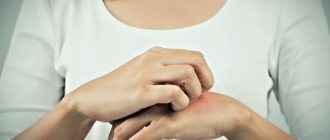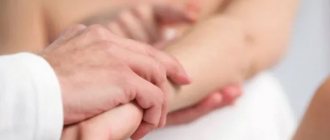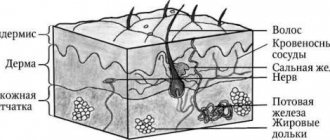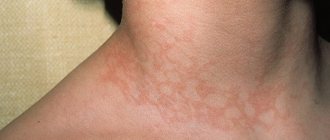Pigment spots are areas of the skin that have darkened for various reasons. They have a brown tint and are noticeably different in color from the surrounding tissues. Unlike skin changes caused by infections, injuries or fungi, age spots never become inflamed, so they are considered a purely cosmetic defect.
At the same time, in addition to deteriorating appearance, age spots cause other problems, often complicated by dryness and roughness of the skin, wrinkles, etc., which is why people try to get rid of them.
Age spots
After 55–60 years, unattractive spots often appear on the face, which cause grief and concern for many.
- Gives an unkempt look
- Emphasize age
- Causes cancer alertness or fear of cancer development
Pigment spots on the hands - about the reasons for their appearance and how to get rid of them - read here .
There are two types of age-related pigmentation: seborrheic keratosis and lentigo senile.
Senile lentigo
It occurs during the period of hormonal age-related changes, the reason is a decrease in sex hormones produced by the body.
Clinical picture: flat brown spots with blurred boundaries, which indicates a sufficient depth of their occurrence. The size of the spots can vary and reach up to 1 cm in diameter.
Seborrheic keratosis
Formed in areas with an increased number of sebaceous glands, i.e. on seborrheic areas.
Clinical picture: spots of brown and dark brown color, distinctive features - rise above the surface of the skin, the spots themselves have a greasy surface, covered with horny scales.
The rashes have a characteristic localization - these are seborrheic areas of the skin - the back, chest and face (mainly the T-zone).
The spots are benign, but it is necessary to exercise oncological vigilance, up to a 20% chance of their malignancy.
What to do if rashes appear
There can be many reasons for this, but they are all related to health problems.
Spots indicate problems with internal organs or hormonal imbalance. If they itch, this already indicates that it is not just pigmentation.
It is better not to scratch them or apply cream to them; if the reason is unclear, this can aggravate the problem. Scratching can cause infection and treatment will take longer. It is also impossible to apply different compresses or simply wet the stains.
In some forms of the disease, water can cause the disease to progress in a short time. It is not recommended to take pills or antibiotics without a doctor's prescription.
It is necessary, after examination, to specifically establish the cause of the appearance of these spots. If the cause is established, act accordingly.
If it turns out that this is a manifestation of an allergy, then you should observe and try to identify the allergen and eliminate it. Sometimes allergies manifest themselves to clothing materials.
With allergic reactions, there is itching; they should not be scratched, because there is a high probability of infection getting into the wounds and further suppuration.
If you are sure that you have a rash from stress and fatigue, then you need to consult a doctor so that he can prescribe sedative medications. They will help restore peace of mind and relieve mental agitation. With such manifestations of stress, you can drink soothing infusions of various teas before taking medications.
How to remove age spots on the face
Seborrheic keratosis
Due to the existing likelihood of malignancy, consultation with an oncologist or dermatologist-oncologist is necessary about the possibility of removing the formations.
The method of correction is surgical removal.
Senile lentigo
Correction is possible by prescribing cosmetics - the treatment regimen corresponds to the classic treatment of pigmentation and includes 3 points:
- Exfoliants
- Lightening agents
- Antioxidants
Prevention of the recurrence of lentigo is the regular application of sunscreen with SPF and preparations with antioxidants to the skin, because there is a failure of the skin's own antioxidant defense system.
IMPORTANT! If, over the age of 55 years, there are pigment spots and formations on the skin, the clinical picture of which does not correspond to that described above, a face-to-face consultation with an oncologist is necessary. Prescribing lightening procedures and medications without consulting this specialist is undesirable!
After consulting a dermatologist, lightening drugs are prescribed and retinoids are preferred.
Small spots and factors of their occurrence
If you notice small pink spots on your body, you can judge the appearance of some kind of disease. To diagnose the disease, you need to understand the causes, nature of the rash and its location.
The causes of small spots will be:
- Skin diseases;
- Diseases caused by infection;
- Allergic reactions;
- Changes in hormonal levels;
- An aggravated form of a chronic disease;
- Exposure to external factors: high and low temperatures, insect bites, injuries.
The appearance of small pink spots is a signal from the body about some deviations in the functioning of the body.
You should definitely consult a dermatologist to find out the reasons.
To avoid making the problem worse, here's what to do before you see your doctor:
- Remove from your diet foods that cause an allergic reaction - chocolate, citrus fruits, carbonated drinks;
- Do not wear things made of synthetic fabrics, use only natural materials;
- Do not use hygiene products containing perfumes and additives;
- Apply antihistamine ointment to the skin lesions at least once.
If, after applying these measures, the spots do not disappear after 3 days, become larger, change their color to red, or become severely itchy, you should immediately consult a doctor.
Why retinoids
To effectively lighten the skin from age spots, the same three groups of products are needed: lightening substances - reduce the production of melanin, antioxidants - reduce the number of free radicals that provoke melanin hyperproduction and exfoliating substances - accelerate cellular renewal and remove colored cells from the surface of the skin.
Retinoids cope with all three tasks simultaneously, which reduces the number of products used to one.
IMPORTANT! Retinoids are involved in the activation of genes responsible for suppressing tumor growth.
Therefore, some retinoids are used as a local auxiliary drug in the treatment of skin manifestations of cancer. Thus, the use of retinoids is the prevention of degeneration of age-related neoplasms.
Read about how important retinoids are in correcting age spots remaining on the skin after acne - post-acne here .
How do retinoids work?
Retinoids are a group of vitamin A derivative substances used by dermatologists and cosmetologists for a number of indications. Due to its physiological effect on the skin, it effectively rejuvenates, eliminates acne and brightens the skin.
- Inhibit tyrosinase
- They inhibit the transport of pigment in the skin - the process of transferring melanin into the pigment cells of melanocytes
- Normalize cellular renewal and stimulate timely exfoliation of pigmented horny scales from the surface of the skin.
- Activate keratogenesis - the appearance on the surface of the skin of cells with a normal, genetically programmed amount of pigment, i.e. normally colored.
- They work as conductors for other active ingredients, ensuring their deep penetration.
Knowing the principles of operation and rules of application, you can achieve a true correction of existing skin problems.
Complications and consequences
The consequences for advanced forms of rashes are serious. When they are caused by an allergy, its untimely treatment leads to Quincke's edema.
This is extensive tissue swelling that makes breathing difficult. The rash will spread, the itching will not give rest, and pustules will appear as a result of scratching.
If psoriasis is not treated in a timely manner, complications arise:
- The kidneys and liver will stop working normally;
- The metabolism in the body will undergo changes;
- Provoking the development of heart diseases;
- Disorders in the nervous system.
If treatment is not started in time, the spots will completely cover the entire body. The skin will not be able to perform its main function - breathing. The normal functioning of the sweat glands will be disrupted.
The body will not be able to regulate temperature, this will lead to inflammation, and then blood poisoning. Changes in metabolic processes are possible. Negatively affects the cardiovascular system.
If treatment is not started immediately, there is a risk of the following diseases:
- Liver and kidney failure;
- Stroke;
- Oncological diseases;
Rules for using retinoids
IMPORTANT! It is a serious mistake for a cosmetologist if he avoids prescribing retinoids for fear of side effects: redness, erythema, dryness and flaking. These symptoms can be easily avoided if you follow the recommendations:
- Use cosmetics with retinol from professional brands
Are you tempted to buy an inexpensive retinoid product at the pharmacy? It is important to know the differences:
In pharmaceutical forms, synthetic analogues of retinol are used, which are more aggressive on the skin and are more likely to provoke retinoic dermatitis ;
Professional cosmetic preparations contain natural forms of retinol , which are gentle in operation, while providing all the necessary functions to the skin;
Professional cosmetics with retinol contain ingredients with a brightening effect to enhance effectiveness, as well as a calming and restorative effect - for ease of use.
- Follow the recommended application regimens
Each drug has its own scheme of use, which must be familiarized with before use. The difference in the frequency of application of the product is related to the percentage and form of retinol.
A number of serums and creams with retinol are used daily in the evening (up to 0.5%), and products with 1-2% retinol according to an increasing scheme, very often from the first week from 1 time per week, gradually increasing to a multiplicity - in the evening every other day, to 4-5 weeks of use.
- Apply locally to age spots
If there are no additional indications for the use of retinol, it is enough to apply the product only to the area of age spots.
- Use only at night
Retinoids are applied to the skin only in the evening - a single rule for all products with retinol! A single application is enough, it is important not to forget to apply sunscreen with SPF to the skin in the morning, as retinoids increase, thin the stratum corneum and increase the skin's vulnerability to ultraviolet and other rays.
However, regular use of mineral SPF reduces all threats from the sun to zero and makes the use of retinol completely safe!
- Patience!
The work of retinoids is physiological, so the result of use is not immediately visible. Expect a lasting visible effect in about the second month from the start of use. However, we hasten to please you - the result, thanks to the gradual physiological effects of retinol, is persistent and pronounced. It is possible to completely get rid of age spots within 6-8 months of use.
Brightening Serum DermaQuest
Designed specifically for the comprehensive fight against age spots - contains 2% retinol , enriched with snow-white lily stem cells and Bakuchiol.
Serum benefits:
- A high working concentration of 2% retinol effectively normalizes the functioning of melanocytes, while effectively repairing damage and rejuvenating the skin.
- Rich complex of whitening ingredients with multidirectional action :
- Stem cells of the white lily,
- Bakuchiol (Vitamin A simulator) further increases the effectiveness of the drug,
- Hexylresorcinol is a safe analogue of hydroquinone, its activity is 4 times higher
- Botanical extracts with brightening effects
BONUS when using!
The serum is designed for complete comprehensive care for skin with age spots - in addition to the brightening effect, it effectively moisturizes due to the content of hyaluronic acid, rejuvenates the skin thanks to Retinol and antioxidants, and also softens and restores barrier function - it contains Jojoba oil and Aloe extracts.
Safety – does not contain hydroquinone;
Brightening serum works against all types of pigmentation, including deep, stagnant and long-standing ones.
Application according to a special scheme:
In the 1st week, apply - 1 time, in the 2nd - 2 times, in the 3rd - 3 times a week, in the 4th and subsequent 4 times a week.
Treatment methods
Treatment depends on the manifestation of which disease the spot on the skin is, and what pathogens it is caused by. After the diagnosis, the doctor prescribes a course of medications that will help get rid of the spots. Contraindications, allergies, and the general condition of the patient are also taken into account.
Medications
If the doctor determines the presence of an allergic reaction, then first you need to eliminate the irritating factor - medicine, food, dust, pet hair, etc. Antihistamines (antiallergic) drugs are taken internally, such as: Suprastin , Loratadine , Tavegil .
Sulfur-tar and sulfur-salicylic ointments are used topically against itching and irritation. Viral and bacterial infections are treated with antibiotics, which are prescribed depending on the specific pathology. Amoxicillin , Ceftriaxone , and penicillin group drugs are effective for tick bites Valaciclovir is used to treat herpes zoster.
For various types of lichen (depending on the pathogen), complex therapy is used, which includes taking antihistamines, sedatives, as well as vitamins and glucocorticosteroid hormones.
Physiotherapy supplements medication intake.
Antifungal medications are prescribed for fungi in the form of tablets, solutions, ointments, and gels. These include :
- Fluconazole;
- Irunin;
- Batrafen;
- Lamisil.
For autoimmune processes occurring in the body, medications are selected depending on the established pathology, since the cause should be treated, and not just its symptom.
What can be corrected with Botox: eyes, eyebrows, forehead, armpits. How to treat pityriasis rosea, watch the video:
Home methods
In addition to traditional pharmaceuticals, you can use folk remedies made from natural plant materials.
On the face, where the skin is especially delicate, in order to prevent more irritation, it is better to wipe the rashes with chamomile and calendula decoctions. If the skin is affected by lichen, then to reduce its manifestations, daily washing with tar soap is recommended. Lubricating the lesions with iodine solution will have a disinfecting, tanning effect.
An effective way to reduce plaques is propolis with alcohol or a mixture of butter and birch tar. A decoction of wormwood is used as a lotion for the skin.
For allergic dermatitis, a decoction of oak bark or diluted Kalanchoe juice , which has anti-inflammatory properties, helps; mashed mint leaves will relieve itching and soothe irritation.
When peeling spots, infusions and baths of string and chamomile, sea buckthorn oil, apple or grape vinegar are effective.
Folk remedies
For many skin diseases, red lesions can be eliminated using traditional medicines made from natural ingredients.
There are many folk recipes that allow you to quite successfully cope with infectious and allergic skin diseases. It is suggested to use garlic tincture against lichen spots. To prepare it, the garlic is crushed, the resulting pulp is mixed with alcohol, and infused in a dark place. You can also mix grated garlic with butter and apply the prepared ointment to the affected areas twice a day. This garlic medicine should be stored in the refrigerator.
An important component of many preparations for lichen is birch tar, which is recommended to lubricate the stains that appear. You can use pure tar or mix it with egg white. Birch tar also helps in the fight against weeping eczema.
Traditional healers advise making lotions based on decoctions and infusions of medicinal plants : chamomile, string, calendula. You can lubricate the affected skin with garlic, viburnum, and sea buckthorn juice. It is also recommended to wipe the fungus-affected areas of the body with fresh lemon juice or grape vinegar.










